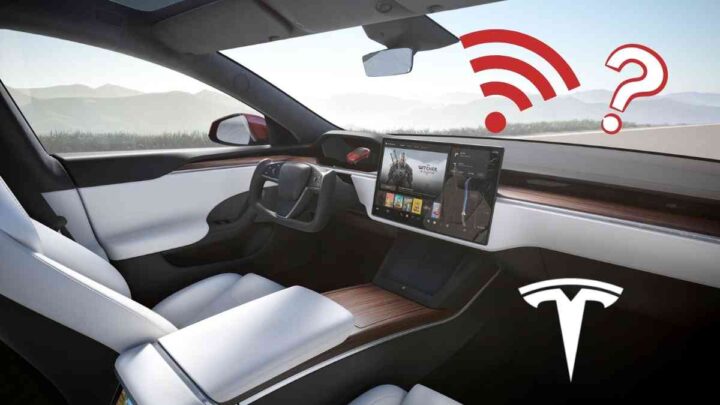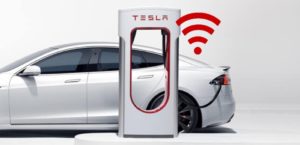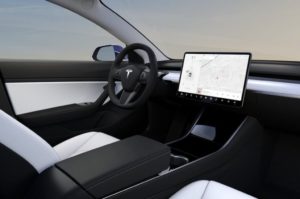Tesla WiFi: The Best Guide. Maintaining a stable Wi-Fi connection in your Tesla vehicle is essential for accessing over-the-air updates, diagnostics, and online services. However, like any other technology, Wi-Fi connectivity can sometimes be unreliable, resulting in connection issues. In this article, we’ll explore some tips and best practices to help you maintain a reliable Wi-Fi connection in your Tesla vehicle.
Some helpful articles,
- ChargePoint & EVgo: Where to Charge Your Tesla
- What is Tesla Premium Connectivity: is it worth the candle?
- How Long Do Tesla Brakes Last?
- Are Teslas AWD? — Are they?
Tesla won’t connect to wifi.
How to connect wifi in Tesla?
The Tesla is a state-of-the-art electric vehicle that offers a range of advanced features, including Wi-Fi connectivity for over-the-air updates, diagnostics, and online services. However, like any other technology, you may encounter issues when trying to connect your Tesla to Wi-Fi. If you’re facing challenges with connecting your Tesla to Wi-Fi, don’t worry! We’ve got you covered with some troubleshooting tips to help you get connected.
- Verify Wi-Fi Network Settings: The first step in troubleshooting Wi-Fi connectivity issues is to ensure that your Wi-Fi network settings are configured correctly on your Tesla. Go to the touchscreen display and select ‘Controls’ > ‘Settings’ > ‘Wi-Fi.’ Make sure that Wi-Fi is enabled and enter the correct network name (SSID) and password if you’re connecting to a new network. Keep in mind that passwords are case-sensitive. Once the correct network details are entered, tap on ‘Connect.’
-
Check Signal Strength: Weak Wi-Fi signal strength can be a potential reason for connectivity issues. If your Tesla is not connecting to Wi-Fi, try moving your car closer to the Wi-Fi router. Factors such as thick walls, interference from other devices, or distance from the router can impact Wi-Fi signal strength. By positioning your car closer to the router, you may be able to improve the signal strength and resolve the connectivity issue.
-
Reset Network Settings: If you’re still encountering Wi-Fi connectivity problems, you can try resetting the network settings on your Tesla. To do this, go to ‘Controls’ > ‘Safety & Security’ > ‘Power Off.’ Allow the car to fully power off, then press the brake pedal to restart it. Once the car has restarted, go to ‘Controls’ > ‘Settings’ > ‘Wi-Fi’ and try connecting to your Wi-Fi network again.
- Update Software: Keeping your Tasla’s software up to date is crucial for optimal performance. Outdated software can sometimes result in connectivity issues, including Wi-Fi problems. To check for software updates, go to ‘Controls’ > ‘Software’ > ‘Software Update.’ If an update is available, follow the prompts to install it. After the update is complete, attempt connecting to Wi-Fi again.
- Restart Wi-Fi Router: Sometimes, the issue may not lie with your Tesla, but with your Wi-Fi router. Try restarting your router by unplugging it from the power source, waiting for a few minutes, and then plugging it back in. This can help resolve any temporary glitches or connectivity issues with the router that may be affecting your Tesla’s ability to connect to Wi-Fi.
- Check Wi-Fi Network Settings on Router: Ensure that your Wi-Fi router settings are compatible with your Tesla. Check if your router is using the 2.4 GHz or 5 GHz frequency band, as the Model 3 only supports the 2.4 GHz band. Additionally, verify that your router is set to broadcast the SSID, as the Tesla cannot connect to hidden networks. You can also try changing the channel on your router to avoid interference from other devices.
- Contact Tesla Support: If you’ve tried all the above solutions and your Tesla is still not connecting to Wi-Fi, it’s advisable to reach out to Tesla Support for further assistance. Tesla’s customer support team is equipped to provide troubleshooting guidance and help identify any potential hardware or software issues that may be causing the problem.
What to Do If The Tesla Software Update Does Not Work?
Tesla vehicles are known for their advanced technology, including regular software updates that provide new features and improvements. However, there may be instances where a software update does not work as expected. In this article, we will explore some steps you can take if you encounter issues with a Tesla software update.
- Check Your Internet Connection: Before attempting any troubleshooting steps, it’s important to ensure that your Tesla vehicle is connected to a stable internet connection. Software updates require a strong and reliable internet connection to download and install properly. If you’re experiencing slow or unstable internet connection, it may interfere with the software update process. Make sure your vehicle is connected to a Wi-Fi network or has a strong cellular signal.
- Restart Your Tesla Vehicle: Sometimes, a simple restart can help resolve software update issues. Try restarting your Tesla vehicle by going to ‘Controls’ > ‘Safety & Security’ > ‘Power Off’ and then selecting ‘Power Off’ to shut down your vehicle. Wait for a few minutes and then press the brake pedal to turn your vehicle back on. Once your vehicle has restarted, check if the software update is progressing.
- Check for Sufficient Storage Space: Tesla software updates require sufficient storage space to download and install. If your vehicle’s storage is full, it may prevent the software update from completing successfully. To check the storage space on your Tesla vehicle, go to ‘Controls’ > ‘Settings’ > ‘Software’ > ‘Cabin Overheat Protection’ > ‘Manage’ and then select ‘Storage.’ If the storage space is low, you may need to delete some unnecessary data, such as dashcam footage or saved media files, to free up space for the software update.
- Check for Software Update Settings: Tesla vehicles allow users to customize their software update settings, such as scheduling updates or enabling ‘Advanced’ mode for quicker updates. If you have customized your software update settings, it’s worth checking if any settings may be affecting the update process. To access your software update settings, go to ‘Controls’ > ‘Settings’ > ‘Software.’ You can try disabling any custom settings and allowing the update to proceed normally.
- Check for Error Messages: If the software update is not working, check for any error messages or notifications on your Tesla vehicle’s screen. Tesla vehicles usually display error messages or prompts if there are issues with the software update process. These messages can provide valuable information about the problem and potential solutions. If you see an error message, note down the details and contact Tesla Support for further assistance.
- Contact Tesla Support: If you’ve tried the above steps and are still unable to resolve the issue with the software update, it’s advisable to contact Tesla Support for assistance. Tesla’s customer support team is trained to handle software update issues and can provide troubleshooting guidance or even remotely diagnose and resolve the problem. You can contact Tesla Support through the Tesla mobile app, website, or by calling their customer support hotline.
- Be Patient: Software updates can sometimes take time, depending on the size of the update and your internet connection speed. It’s important to be patient and allow the software update to complete at its own pace. Avoid interrupting the update process or attempting to force a restart, as this may cause further issues. If the software update seems to be taking longer than expected, you can check the progress by going to ‘Controls’ > ‘Software’ > ‘Software Update’ in your Tesla vehicle.
Tesla WiFi to Superchargers
Tesla, the pioneering electric vehicle (EV) manufacturer, is constantly innovating to enhance the user experience for its customers. In a recent development, Tesla has announced plans to add Wi-Fi capabilities to its Supercharger network, further expanding the convenience and connectivity options for Tesla owners while they charge their vehicles.
The Tesla Supercharger network is a global network of high-speed chargers designed specifically for Tesla vehicles. These chargers are strategically located along popular travel routes, making long-distance travel in a Tesla EV feasible and convenient. With the addition of Wi-Fi capabilities to Supercharger stations, Tesla aims to provide an enhanced charging experience for its customers.
The addition of Wi-Fi to Supercharger stations has several potential benefits for Tesla owners. First and foremost, it offers an opportunity for Tesla owners to stay connected during their charging sessions. They can access the internet, browse, stream media, or work remotely, making their charging time more productive and enjoyable. This is especially beneficial during long road trips, where drivers and passengers may want to stay connected for entertainment or work purposes.
Furthermore, Wi-Fi at Supercharger stations can also improve the convenience and efficiency of charging. Tesla vehicles receive regular software updates that introduce new features, improvements, and bug fixes. These updates are typically downloaded and installed when the vehicle is parked and connected to Wi-Fi. With Wi-Fi available at Supercharger stations, Tesla owners can potentially download and install software updates while they are charging their vehicles, saving time and ensuring that their vehicles are up-to-date with the latest software improvements.
In addition to software updates, Wi-Fi at Supercharger stations can also enable other connected services for Tesla owners. For example, it could facilitate over-the-air diagnostics and troubleshooting, allowing Tesla service technicians to remotely diagnose and resolve issues with vehicles, potentially reducing the need for owners to visit a service center physically.
However, it’s important to note that not all Supercharger stations currently have Wi-Fi capabilities. Tesla is in the process of adding Wi-Fi to existing Supercharger stations and incorporating Wi-Fi into new Supercharger stations as they are built. The availability of Wi-Fi at Supercharger stations may vary depending on the location and region, as Tesla continues to expand and optimize its Supercharger network worldwide.
To access Wi-Fi at Supercharger stations, Tesla owners can connect to the Supercharger station’s Wi-Fi network using their vehicle’s infotainment system. Once connected, they can enjoy the benefits of internet access during their charging session. However, it’s essential to follow Tesla’s guidelines and terms of use for Supercharger station Wi-Fi, which may include restrictions on data usage, prohibited activities, and other terms and conditions.
It’s worth mentioning that Tesla is not the only automaker that offers Wi-Fi connectivity at its charging stations. Several other EV manufacturers and charging network providers also offer Wi-Fi capabilities at their charging stations, recognizing the increasing demand for connectivity and convenience among EV owners. Wi-Fi at charging stations has become a desirable feature for EV owners, as it allows them to stay connected and make the most of their charging time.
Tesla’s plan to add Wi-Fi to Supercharger stations is a significant development that aims to enhance the charging experience for Tesla owners. The availability of Wi-Fi at Supercharger stations can offer increased convenience, productivity, and connectivity options for Tesla owners during their charging sessions. It can facilitate software updates, connected services, and provide an opportunity for staying connected while on the go. As Tesla continues to expand its Supercharger network and incorporate Wi-Fi capabilities, it further demonstrates the company’s commitment to continuously improving the ownership experience for its customers and setting new standards in the EV industry.
In conclusion, encountering issues with a Tesla software update can be frustrating, but there are steps you can take to resolve the problem. Checking your internet connection, restarting your vehicle, checking storage space, reviewing software update settings, checking for error messages, and contacting Tesla Support are all potential solutions. Remember to be patient and allow the software update to complete.
Maintaining a reliable Wi-Fi connection in your Tesla vehicle is crucial for accessing important features and services. By keeping your software updated, positioning your vehicle near the Wi-Fi router, checking Wi-Fi router settings, restarting your router, avoiding VPN or proxy usage, checking for network.






